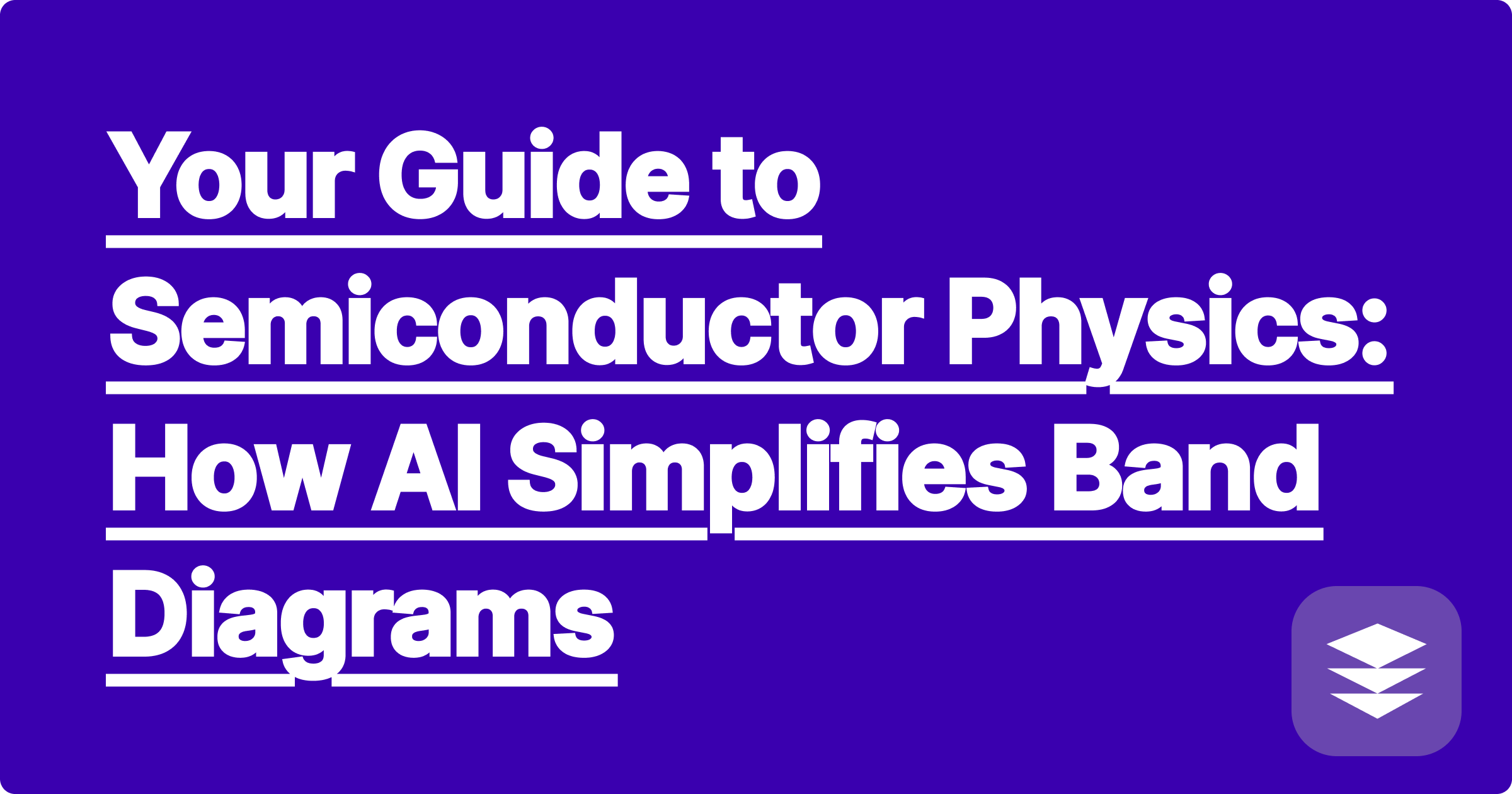
Welcome to the quantum world of semiconductor device physics. This is the course that explains how transistors, diodes, and all of modern electronics actually work. It's also a subject filled with deeply abstract and non-intuitive concepts, chief among them: the energy band diagram.
An energy band diagram is the single most important tool for understanding the behavior of a semiconductor device. But it's also a source of massive confusion. What is the Fermi level? Why do the bands bend? What does it mean for an electron to be in the conduction band?
Getting good semiconductor device physics help is crucial for grasping these ideas. While a human tutor is great, an AI assistant can be an incredible resource for visualizing these abstract concepts and getting your questions answered instantly. This guide will explain how AI can help you finally understand and interpret the energy band diagram.
The difficulty stems from the quantum mechanics that underlies them.
An AI tool like GPAI Solver, combined with the organizational power of GPAI Cheatsheet, can make these abstract concepts tangible.
Before you can understand a complex diagram, you need to master the basics.
This is where AI becomes a powerful visualization tool.
[Image: A clean energy band diagram generated by GPAI. It shows the conduction and valence bands, with the Fermi level (Ef) positioned just below the conduction band (Ec), and a donor level (Ed) nearby. Alt-text: An AI explaining an energy band diagram for an n-type semiconductor.]
The real test of understanding is predicting how the diagram changes under different conditions.
"The most useful thing for my semiconductor final was using GPAI Cheatsheet. I uploaded all my lecture notes, and it created a perfect 'Knowledge Block' just for band diagrams. It had the diagram for intrinsic, n-type, p-type, and the p-n junction all in one place. It was the best study guide I've ever had."
You can use GPAI Cheatsheet to create a master document of all the key diagrams and definitions. By consolidating this information, you can easily compare how the Fermi level shifts with doping or how the bands bend under forward vs. reverse bias, reinforcing your understanding of the core principles.
A: Yes. Once you understand the band diagram, you can ask GPAI Solver to perform the relevant calculations. For example: "For silicon at 300K with this band gap and Fermi level position, calculate the electron concentration in the conduction band." The AI can apply the correct formulas (like the mass-action law) to find the answer.
A: Textbooks provide a static, definitive source. An AI provides an interactive, dynamic learning experience. You can ask the AI to explain the same concept in five different ways until one finally clicks. You can ask it to generate a diagram for a specific doping level you choose. This interactivity is key to building a robust mental model.
A: The AI's strength is in explaining and analyzing the fundamental physics of existing devices. It can explain how a MOSFET works by showing its band diagram under different gate voltages. However, designing a new semiconductor device with specific performance characteristics is a far more complex task that is still the domain of professional TCAD simulation software and experienced engineers.
Semiconductor physics is the foundation of the digital revolution. By using AI as your personal tutor and visualization tool, you can demystify its most abstract concepts. Stop being intimidated by band diagrams and start using them as the powerful analytical tool they are meant to be.
Ready to finally master semiconductor physics?
[Try the GPAI Suite today. Get the help you need to understand energy band diagrams, Fermi levels, and more. Sign up now for 100 free credits.]
Circuit Analysis Made Simple: An AI Assistant for Nodal and Mesh Analysis
Understanding Electromagnetics: How AI Can Visualize Fields and Waves
Digital Logic Design: From Truth Tables to Karnaugh Maps with AI
Signals and Systems: How AI Can Help You with Fourier and Laplace Transforms
Your Guide to Semiconductor Physics: How AI Simplifies Band Diagrams
How to Write Verilog or VHDL Code Faster with an AI Assistant
Mastering Microelectronics: An AI Tool for Amplifier and Filter Design
The ECE Student's Ultimate Cheatsheet: Combining Circuits, Signals, and Code
Can AI Help Me with My PSpice / LTspice Simulation?
How to Prepare for the FE Electrical and Computer Exam with AI